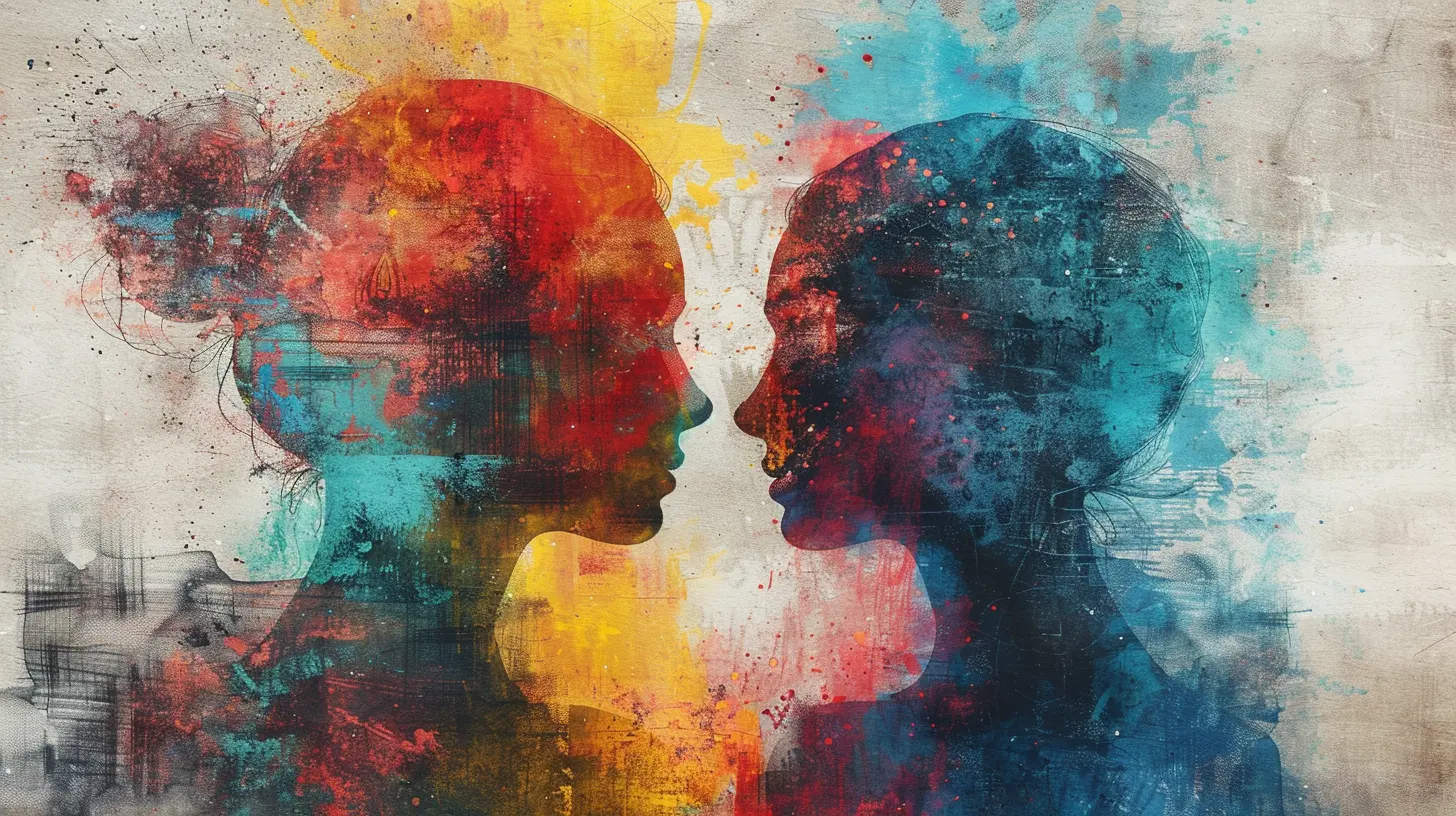Understanding the Complexities of Bipolar Disorder
1 May 2025
Bipolar disorder is one of the most misunderstood mental health conditions out there. People often throw around terms like "bipolar mood swings" without truly grasping what it means to live with this disorder. It’s not just about feeling happy one moment and sad the next—it's a complex mental health condition that affects emotions, energy, and daily life in profound ways.
If you've ever wondered what bipolar disorder really entails, how it affects people, and what can be done to manage it, you’re in the right place. Let's break it down piece by piece. 
What Is Bipolar Disorder?
Bipolar disorder is a mental health condition characterized by extreme mood swings that include emotional highs (mania or hypomania) and lows (depression). These dramatic shifts can affect sleep, energy levels, behavior, judgment, and even a person’s ability to carry out daily tasks.There are several types of bipolar disorder, each with its unique set of challenges. But before we get into those, let’s talk about what these mood swings actually look like in real life. 
The Highs and Lows: Mania vs. Depression
The hallmark of bipolar disorder is the swinging between two extreme emotional states:Mania (or Hypomania) – The Highs
During a manic episode, a person might feel:- Unstoppable energy – They may sleep little yet feel incredibly energized.
- Racing thoughts – Their mind feels like it's moving a mile a minute.
- Overconfidence – A belief that they can take on anything, sometimes leading to risky behavior.
- Impulsive decision-making – Overspending, reckless driving, or risky business ventures.
- Talking excessively or quickly – Words flow without stopping, making conversations overwhelming for others.
Hypomania is a milder version of mania. It doesn’t cause extreme dysfunction, but it can still lead to impulsive decisions and difficulties in relationships.
Depression – The Lows
On the flip side, depressive episodes come with:- Overwhelming sadness – A deep, persistent gloom that can make everything feel hopeless.
- Fatigue – Even getting out of bed can feel like climbing a mountain.
- Loss of interest – Hobbies, friends, and even food may no longer bring joy.
- Low self-esteem – Feelings of worthlessness, guilt, or self-doubt.
- Suicidal thoughts – In severe cases, people may feel life is not worth living.
The drastic contrast between these two states is what makes bipolar disorder so challenging to manage. 
Types of Bipolar Disorder
Not all cases of bipolar disorder look the same. Here are the main types:Bipolar I Disorder
This type is characterized by full-blown manic episodes that last at least seven days or are severe enough to require hospitalization. Depressive episodes usually occur as well, but the manic episodes are the defining trait.Bipolar II Disorder
In Bipolar II, people experience hypomania (a less severe form of mania) along with depressive episodes. While hypomania may not seem as destructive, the depression can be crippling.Cyclothymic Disorder (Cyclothymia)
This type involves milder mood swings that aren’t as extreme as full mania or full depression but still cause emotional instability over time.Other Types
There are also cases of bipolar disorder that don’t fit neatly into these categories. Some may be induced by substances or medical conditions.
What Causes Bipolar Disorder?
The exact cause of bipolar disorder isn’t fully understood, but several factors are believed to play a role.Genetics
If a close family member has bipolar disorder, you're more likely to develop it yourself. However, genetics alone don’t determine your fate—other factors come into play.Brain Chemistry
Imbalances in brain chemicals (neurotransmitters) like serotonin, dopamine, and norepinephrine can make mood regulation difficult.Environmental Triggers
Major life events, trauma, stress, or substance abuse can sometimes trigger bipolar episodes.How Bipolar Disorder Affects Daily Life
Bipolar disorder doesn’t just affect emotions—it impacts work, relationships, health, and everyday responsibilities. People with the disorder may struggle with:- Maintaining stable relationships – The mood swings can make it hard to keep friendships and romantic relationships steady.
- Keeping a job – Frequent mood shifts can lead to inconsistent work performance.
- Managing finances – Manic episodes can lead to impulsive spending sprees, while depression can make managing money feel overwhelming.
- Substance abuse risks – Some people turn to drugs or alcohol as a way to self-medicate or cope with their unstable moods.
It’s like riding an emotional roller coaster with no idea when the next drop is coming.
Treatment Options: Can You Manage Bipolar Disorder?
Yes, bipolar disorder is manageable! While there’s no outright cure, treatment can significantly improve quality of life. Here’s what works:1. Medication
Mood stabilizers, antipsychotics, and antidepressants can help balance the highs and lows. However, finding the right medication may take time, as each person responds differently.2. Therapy
Psychotherapy, such as Cognitive Behavioral Therapy (CBT), can help individuals recognize triggers, manage stress, and reshape negative thought patterns.3. Lifestyle Adjustments
- Stick to a routine – Regular sleep and meal schedules can stabilize mood fluctuations.- Exercise regularly – Physical activity helps regulate brain chemicals and reduces stress.
- Avoid alcohol and drugs – These substances can worsen symptoms and trigger episodes.
4. Support System
Having a support system of family, friends, and even support groups can provide the encouragement needed to deal with the ups and downs.Myths and Misconceptions
Let’s tackle some of the most common myths surrounding bipolar disorder:💡 Myth 1: People with bipolar disorder are just moody.
➡️ Truth: It’s much more than moodiness. These mood swings are extreme and can disrupt every aspect of life.
💡 Myth 2: Mania is fun because you feel productive.
➡️ Truth: While some people feel great during mania, the impulsive decisions and lack of control can lead to destructive outcomes.
💡 Myth 3: People with bipolar disorder can “snap out” of it.
➡️ Truth: It’s a medical condition, not a choice. Managing it requires proper treatment, not just willpower.
Living with Bipolar Disorder: A Message of Hope
If you or someone you love has bipolar disorder, remember this: it is manageable. With the right treatment, support, and coping strategies, people with bipolar disorder can lead fulfilling and stable lives.Understanding the condition is the first step toward breaking the stigma and ensuring that those affected feel supported rather than judged. Mental health matters, and no one should have to navigate it alone.
Final Thoughts
Bipolar disorder is complex, but it’s not impossible to manage. Knowing the signs, seeking treatment, and having a strong support system can make all the difference. Whether you're dealing with it yourself or supporting a loved one, compassion and understanding go a long way.If you suspect you or someone you know has bipolar disorder, don’t hesitate to reach out to a medical professional. There’s help out there, and life can get better.
all images in this post were generated using AI tools
Category:
Psychological DisordersAuthor:

Ember Forbes
Discussion
rate this article
3 comments
Trevor Sharpe
Feeling blue? Just remember, it’s not always ‘blue’!
May 9, 2025 at 3:36 PM

Ember Forbes
Thank you for your comment! It's true that emotions can be complex, and understanding those nuances is key in bipolar disorder.
Riven Foster
This article provides valuable insights into the nuances of bipolar disorder, highlighting its symptoms, treatment options, and the importance of support. A must-read for those seeking deeper understanding!
May 4, 2025 at 3:05 PM

Ember Forbes
Thank you for your kind words! I'm glad you found the article informative and insightful. Your support means a lot!
Cody Hudson
Bipolar disorder unveils the intricate interplay between emotion and cognition, illuminating the profound depths of human experience. By embracing its complexities, we gain insight not only into mental health but also into resilience, creativity, and the fragility of stability within the human psyche. Understanding is the first step toward compassion.
May 3, 2025 at 4:41 AM

Ember Forbes
Thank you for your insightful comment! Your perspective on the interplay of emotions and cognition in bipolar disorder highlights the importance of compassion and understanding in addressing mental health.



